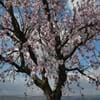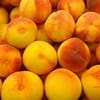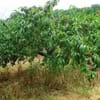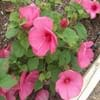Life Span
Perennial
Perennial
Type
Fruit
Flowering Plants, Fruits, Trees
Origin
Northern Africa, Western Asia
Central Asia
Types
Bitter Almonds, Chinese Almonds, Green Almonds
Aceymac apple, Bailey Sweet apple, Dabinett apple, Nehou apple
Number of Varieties
Not Available
Habitat
Dappled Shade, Sunny Edge, Woodland Garden Secondary
Hillside
USDA Hardiness Zone
5-8
5-8
Sunset Zone
2b, 3b, 8, 9, 10, 12, 13, 14, 15, 16, 19, 20, 21
A1, A2, A3, 8, 9, 10, 11, 12, 13, 14, 15, 16, 17, 18, 19, 20, 21, 22, 23, 24
Habit
Oval or Rounded
Oval or Rounded
Flower Color
White, Light Pink
White
Flower Color Modifier
Bicolor
Not Available
Fruit Color
Green
Green, Red
Leaf Color in Spring
Light Green
Dark Green
Leaf Color in Summer
Light Green
Green
Leaf Color in Fall
Light Green, Yellow green
Brown, Green, Light Yellow
Leaf Color in Winter
Light Green
Not Available
Leaf Shape
Egg-shaped
Oblong
Plant Season
Spring, Fall
Spring
Sunlight
Full Sun
Full Sun, Partial shade
Growth Rate
Medium
Medium
Type of Soil
Loam, Sand
Loamy
The pH of Soil
Neutral
Neutral
Soil Drainage
Well drained
Well drained
Bloom Time
Early Spring, Spring, Late Winter
Fall, Summer
Tolerances
Drought
Drought
Where to Plant?
Container
Ground
How to Plant?
Budding, Grafting
Grafting, Seedlings, Transplanting
Plant Maintenance
Medium
Medium
Watering Requirements
Do Not over Water, Water Deeply
Medium
In Summer
Lots of watering
Lots of watering
In Spring
Moderate
Moderate
In Winter
Average Water
Average Water
Soil Type
Loam, Sand
Loamy
Soil Drainage Capacity
Well drained
Well drained
Sun Exposure
Full Sun
Full Sun, Partial shade
Pruning
Heading cuts, Remove damaged leaves, Remove dead branches, Remove dead leaves, Thinning
Prune when plant is dormant, Remove dead or diseased plant parts
Fertilizers
Apply 12-12-12 amounts
All-Purpose Liquid Fertilizer
Pests and Diseases
Almond brownline and decline, Almond kernel shrivel, Alternaria Leaf Spot, Hull rot
Aphids, Canker, Caterpillars, Powdery mildew, Root rot
Plant Tolerance
Drought
Drought
Flower Petal Number
Not Available
Single
Foliage Texture
Medium
Medium
Foliage Sheen
Matte
Matte
Allergy
Diarrhea, Mild Allergen, Nausea, Swelling in mouth
Mouth itching, Throat itching
Aesthetic Uses
Beautification
Not Used For Aesthetic Purpose
Beauty Benefits
Acne, Blackheads, Good for skin, Moisturizing, Prevents greying of hair
Not Available
Environmental Uses
Air purification
Air purification
Medicinal Uses
Antiemetic, Antitumor, Emollient, Nutritive, Pectoral
Cancer, constipation, Diabetes, Diarrhea, Dysentry, Fever, Heart problems, Tooth ache
Part of Plant Used
Seeds, Stem
Fruits
Other Uses
Blended with water to make almond milk, Oil is used for aromatherapy, Used for making dark grey to green dye, Used for producing cooking oil
Used As Food, Wood is used for making furniture
Used As Indoor Plant
No
No
Used As Outdoor Plant
Yes
Yes
Garden Design
Edible, Fruit / Fruit Tree
Fruit / Fruit Tree, Shade Trees, Showy Tree
Botanical Name
PRUNUS dulcis
Malus domestica
Common Name
Almond, Sweet Almond
Apple Tree
In Hindi
मीठा बादाम
सेब का वृक्ष
In German
Süße Mandel
Apfelbaum
In French
Amande douce
Pommier
In Spanish
Almendra dulce
Manzano
In Greek
Sweet Almond
μηλιά
In Portuguese
Amêndoas doces
Macieira
In Polish
słodkich migdałów
jabłoń
In Latin
Almond Pulchra
Arbore
Phylum
Magnoliophyta
Magnoliophyta
Class
Magnoliopsida
Magnoliopsida
Clade
Angiosperms, Eudicots, Rosids
Angiosperms, Eudicots, Rosids
Tribe
Amygdaleae
Not Available
Subfamily
Amygdaloideae
Not Available
Number of Species
Not Available
Not Available
Importance of Sweet Almond and Apple Tree
Want to have the most appropriate plant for your garden? You might want to know the importance of Sweet Almond and Apple Tree. Basically, these two plants vary in many aspects. Compare Sweet Almond and Apple Tree as they differ in many characteristics such as their life, care, benefits, facts, etc. Every gardener must at least have the slightest clue about the plants he wants to plant in his garden. Compare their benefits, which differ in many ways like facts and uses. The medicinal use of Sweet Almond is Antiemetic, Antitumor, Emollient, Nutritive and Pectoral whereas of Apple Tree is Cancer, constipation, Diabetes, Diarrhea, Dysentry, Fever, Heart problems and Tooth ache. Sweet Almond has beauty benefits as follows: Acne, Blackheads, Good for skin, Moisturizing and Prevents greying of hair while Apple Tree has beauty benefits as follows: Acne, Blackheads, Good for skin, Moisturizing and Prevents greying of hair.
Compare Facts of Sweet Almond vs Apple Tree
How to choose the best garden plant for your garden depending upon its facts? Here garden plant comparison will help you to solve this query. Compare the facts of Sweet Almond vs Apple Tree and know which one to choose. As garden plants have benefits and other uses, allergy is also a major drawback of plants for some people. Allergic reactions of Sweet Almond are Diarrhea, Mild Allergen, Nausea and Swelling in mouth whereas of Apple Tree have Mouth itching and Throat itching respectively. Having a fruit bearing plant in your garden can be a plus point of your garden. Sweet Almond has no showy fruits and Apple Tree has showy fruits. Also Sweet Almond is not flowering and Apple Tree is flowering. You can compare Sweet Almond and Apple Tree facts and facts of other plants too.





